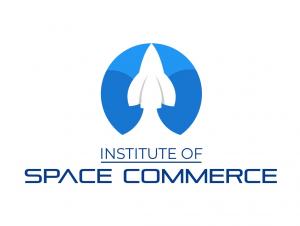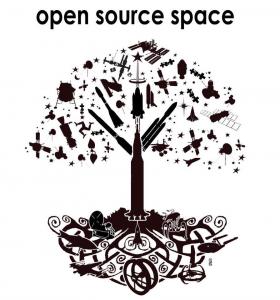Institute of Space Commerce Predicts Key Technology Trends Driving the Commercialization of Outer Space in 2023
Presently, there are two missions en route to the Moon: one commercial mission from a Japanese company, and one from South Korea’s Space Agency. The United States is expected to send three missions to the lunar surface in 2023 through NASA’s Commercial Lunar Payload Services (CLPS) program, which has uniquely created a marketplace for space agencies, universities, and entrepreneurs to fly payloads to the Moon.
The global space economy continues to grow. The Satellite Industry Association’s State of the Satellite Industry Report pegs 2021 global satellite revenues at $368 billion. Further, according to a recent study published by McKinsey & Company, “Private-sector funding in space-related companies topped $10 billion in 2021, an all-time high and about a tenfold increase over the past decade.” The Institute of Space Commerce looks forward to 2022’s figures with sincere interest.
The McKinsey report also noted that this surging investment, which has fueled a wave of innovation, is just one factor transforming the space sector. The report states, “In another big shift, investors are now directing more funds to projects involving lunar and beyond orbital regimes, which have traditionally attracted less attention than regimes at lower altitudes, and all signs point to continued growth.”
It’s important to remember that 100% of the money spent in the space sector isn’t actually spent in space, it’s spent down here on Earth where it fuels our economies. It compensates our workforce, sustains our supply chain, and contributes to technologies that ensure the safety, security and quality of life for people everywhere.
By any account, the last year was a busy one for the space sector, and commercial players like SpaceX have continued to set the pace. With orbital launches taking place at a rate of more than one per week, many of which to field its Starlink constellation, SpaceX now singlehandedly launches and operates more satellites than any nation in the world. In the coming year, SpaceX plans to demonstrate Starship's orbital launch capabilities and further Starlink's global reach, which has proven invaluable for connecting remote and underserved areas and in conflict, such as in Ukraine.
Looking forward, the Institute of Space Commerce predicts the following technology trends and questions that will drive the space industry in the year to come:
Three Space Technology Trends to Watch in 2023
- Open-Source Space: According to ISC co-founder, Michael Potter, "Open-source technology can positively impact a billion people in the next decade." The Institute of Space Commerce has long been an advocate of open-source science and technology and welcomes NASA’s Transform to Open Science (TOPS) initiative as the logical follow-on to the 2012 Technology, Entertainment & Design and International Space University initiative, TEDx Open-Source Space.
- Edge Computing in Space: The miniaturization, decreasing cost, and increasing efficiency of data processing and storage technologies will continue to positively impact and disrupt the space industry. Missions will be increasingly able to distribute resources and host a greater degree of computing power and storage among space systems rather than relying entirely on energy intensive and negative climate impacting terrestrial counterparts.
- Additive Manufacturing of Spacecraft: Advances in additive manufacturing process efficiency, material properties, and precision are changing the equation of cost and complexity for launch vehicles and spacecraft. On Earth, these techniques are resulting in lower costs for launch services and more refined designs of launch vehicles and payloads. In space, in-situ manufacturing of structures, such as expansive solar panels, will result in more capable and longer-lived spacecraft.
Two Critical Questions for 2023
1. Will the pace of progress for a return to the Moon be sustained? After the success of the Artemis 1 mission, NASA and its partners have much to celebrate, but several major elements of the architecture must come together before humans can return to the surface on Artemis 3, which is slated to occur in 2025. An early 2023 maiden orbital flight of SpaceX’s Starship will bode well for the Human Landing System development timeline, but the plan remains audacious in both its schedule, complexity and technical aspects.
2. What does the future hold for geostationary communications business models? Spacecraft in geostationary orbit still account for the majority of global space industry revenues, but major players are evaluating new technologies and market strategies to stay competitive with newer market entrants. To what degree will market consolidation occur in the satellite communications marketplace and broader space sector?
About the Institute of Space Commerce
The Institute of Space Commerce is a US 501 (c)(3) focused on uniquely contributing to the long-term discussion, debate, and acceleration of humanity as a commercially sustainable multiplanetary species.
In 2022, the Institute of Space Commerce continued to grow, joining the N50 program with Geeks Without Frontiers, Intel, Dell, and others to bring the next 50% of humanity online.
The Institute published an innovative paper on the impact of blockchain, distributed ledgers, and cryptocurrencies on the space industry, tilted "Toward a Blockchain-Space Nexus: Challenges & Opportunities to Security, Stability, & Sustainability on the Final Frontier."
The Institute's work has expanded to Brazil in cooperation with Space Cafe Brazil, the Maranhão Brazilian Space Bar Association, the Moon Village Association, the Space Law Commission of the Santos Bar Association, and the Space Law and Policy Working Group of Santos Catholic University. In South Africa, work began with the Future African Space Explorer’s STEM Academy (FASESA). In 2022 the Institute presenting at the Moon Village conference in Los Angeles.
In 2023, Institute will digitally republish Dr. Jerry Pournelle’s seminal work on the economics of space, "A Step Farther Out."
Media Officer
Institute of Space Commerce
eandrade@change.space
Visit us on social media:
Facebook
LinkedIn
Legal Disclaimer:
EIN Presswire provides this news content "as is" without warranty of any kind. We do not accept any responsibility or liability for the accuracy, content, images, videos, licenses, completeness, legality, or reliability of the information contained in this article. If you have any complaints or copyright issues related to this article, kindly contact the author above.


